
Be honest. Are you guilty of signing up to “attend” a virtual event only to run it in the background and do something else? This non-committal attitude towards virtual and hybrid events is not uncommon. Giles Cattle, Director of Creative Strategy and Business Development at Strata, fears it has a lot to do with production values (lack of them), small budgets, and a misguided notion that you should make a virtual event as long as it’s live equivalent. In this opinion piece, Giles believes that a broadcast approach to live events is required and that all virtual events could learn a thing or two from TV land…
Recently, I met a mate down the pub who had just returned from Glastonbury. We had both watched Elton John perform in front of an enormous crowd on the festival’s hallowed Pyramid stage. He watched Elton in the flesh, and I savoured his set from the comfort of my sofa. Whilst both of us loved his performance, I know I’m not going to be down the pub in 20 years’ time telling my friends about Elton’s farewell gig. I wasn’t there.
However, I did have a fantastic night in front of the TV. My evening cemented a firm opinion that I have held for some time; Live events are AMAZING. But the events industry should adopt a broadcast approach to live experiences, as well as virtual and hybrid events. Think about teasing audiences with trailers, developing gripping storylines, and creating suspense. Don’t forget to deliver that moment to catch a breath before gifting audiences a plot twist. Because who doesn’t love an ending that makes people talk the next day?
Earn the attention of your audience
During the pandemic, our sector was guilty of pointing a camera at a stage and “beaming” live footage from an event. This “virtual” experience supposedly engaged a broader audience, but all it did was give people an opportunity to develop low-level expectations of what to expect from the virtual and digital space.
When you do nothing but passively watch something unfold from afar, there’s no level of participation. There’s no rich experience, or shared connection. I believe that we must earn the attention of our audiences rather than demand it. We should deliver on the metrics of engagement, not just attendance.
Do you “reward” guests for “being in the room”?
Any event and communication agency will tell you the level of attention to detail needed to treat two audiences differently. But in a way that does not give either audience a richer or poorer experience.
Premiumisation is key. But what do I mean by that? When you’re in a room with other guests, you feel more than when trying to watch something through a screen. But we also know that attending an event in real life requires more time, money, and effort.
I find that event organisers at live events feel they need to “reward” guests for “being in the room” by giving them different content and more of it. However, the pandemic has taught the world that people want to connect. Watching endless hours of content, whether in person or whilst sitting at a computer screen is not an option. The world is tired of binge-watching content on Netflix, Apple+, Amazon Prime etc (unless it’s Ted Lasso). But it does love an honest documentary or reality show that lasts about an hour (42 minutes with ad breaks). This is where I think the industry can learn and premiumise the events model (hybrid, virtual, AND live).
Create the hype
People want to live in the moment. Event professionals should programme moments in their event agenda enabling audiences to witness something happening right before their eyes and only programme the content that is the most valuable. Imagine yourself as a TV producer who needs to deliver a highlights package. Now is the time to “bundle up” your content and promote it like an hour-long TV programme. Create the hype, deliver the goods, and then give people a platform to interact and share their thoughts.
Your virtual audience is not in the “cheap seats”
What amazes me is that no one has a line on the budget sheet for virtual and no one considers the true amount of money that should be given over to content creation. For example, if you demand that your audience sit for an hour and a half, you need film-quality content that combines storytelling and narrative and production values that match.
When you’re at a live event, audience members have the opportunity to move between spaces and modes of information. Virtual attendees don’t have the option to do that so think of your event as destination television – like Britain’s Got Talent or Traitors. Create moments and a narrative that the live audience doesn’t see and get people talking. Think about the “golden hour” and what time your event should take place, deliver meaningful bursts of information, and channel the convenience of an “ad” break. But most importantly, remember that broadcast quality requires investment in time, tech, and pounds.
Sadly, I still see agencies putting all their clients’ money into real-life experiences but failing to engage online crowds. Brands don’t want to pay an additional 25 to 40% on top of their live event budgets to produce quality virtual events. If you are required to engage with audiences remotely, you must put some of the production value into delivering the best quality content for those remote audiences. Gone are the days of having a camera at the back of the room. It’s not the theatre. Your virtual audience is not in the “cheap seats”.
Longer equals more and more equals better?
Award ceremonies are great examples of where content is drawn out over dinner with copious drinks. Would you want to virtually “attend” an awards dinner, sit and watch people eat dinner, listen to an incredibly long “short-list”, and then find out hours later that you haven’t won? Plus, you’ve done all that at 2am because no one has thought about global reach and time differences.
One of the best virtual events I’ve ever experienced teased the audience but also told the audience what to expect. It also created stand-out moments. It was short, and it was clear that the organisers had recruited a team with TV experience. They knew that if they wanted people to stay their audience had to be entertained. It was evident that the content team had asked themselves: “Would I find this fun to watch?”. I enjoyed the entire experience, which ended on a high and with a bang. It gave ,me the same “just one more episode” feeling I get from watching Ted Lasso! I didn’t want the experience to end and that’s how every virtual event should be. This is where I think there are lessons to be learned.
The biggest challenges are persuading key leadership teams that you don’t need to “reward” guests who have travelled to your event with three hours of content that could be delivered in one-and-a-half hours. Are you guilty of overfilling your agenda because you think there’s a perception that longer equals more and more equals better?
I don’t think that this is the case and it’s a point that should be challenged. Shorter, higher-quality content gives people more time to connect, engage, and ask questions. That should be every agency’s priority. Both live and virtual audiences should come away feeling they’ve shared a moment. We can achieve that by spending less time saying better things.
Shorter event formats allow more time for connection and in today’s world, that’s paramount. But what’s interesting is that we have started to find that the satisfaction scores and engagement levels from virtual events are higher than those who attended real-life sessions.
We’re now talking to clients about creating live events with exceptional broadcast-quality virtual events. They must have the ability to send satisfaction levels through the roof. It helps that broadcast and television are in Strata’s DNA. I think that now is the time to marry all the best elements of the most amazing live event you can produce, with the gripping star appeal of an Emmy award-winning TV show.
Stay tuned!
This article first appeared in C&IT Magazine, October 2023. To read the full article, visit C&IT.
Giles Cattle, Director of Creative Strategy and Business Development at Strata Creative Communications.
Explore Our Blog
Proud to deliver lasting moments for...

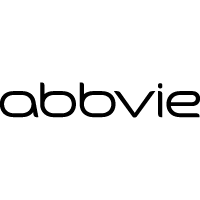










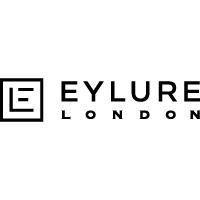





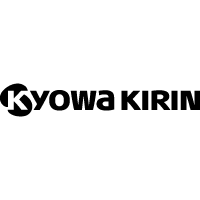
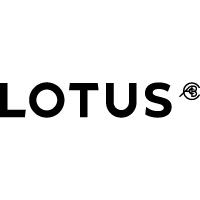











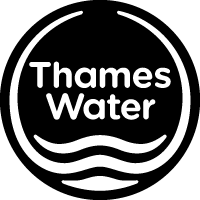









Let’s have
a chat!
Every brand touchpoint is a moment that matters. A chance to strengthen your message with clarity and relevance. To make your audience feel like they're part of something extraordinary, get in touch.








